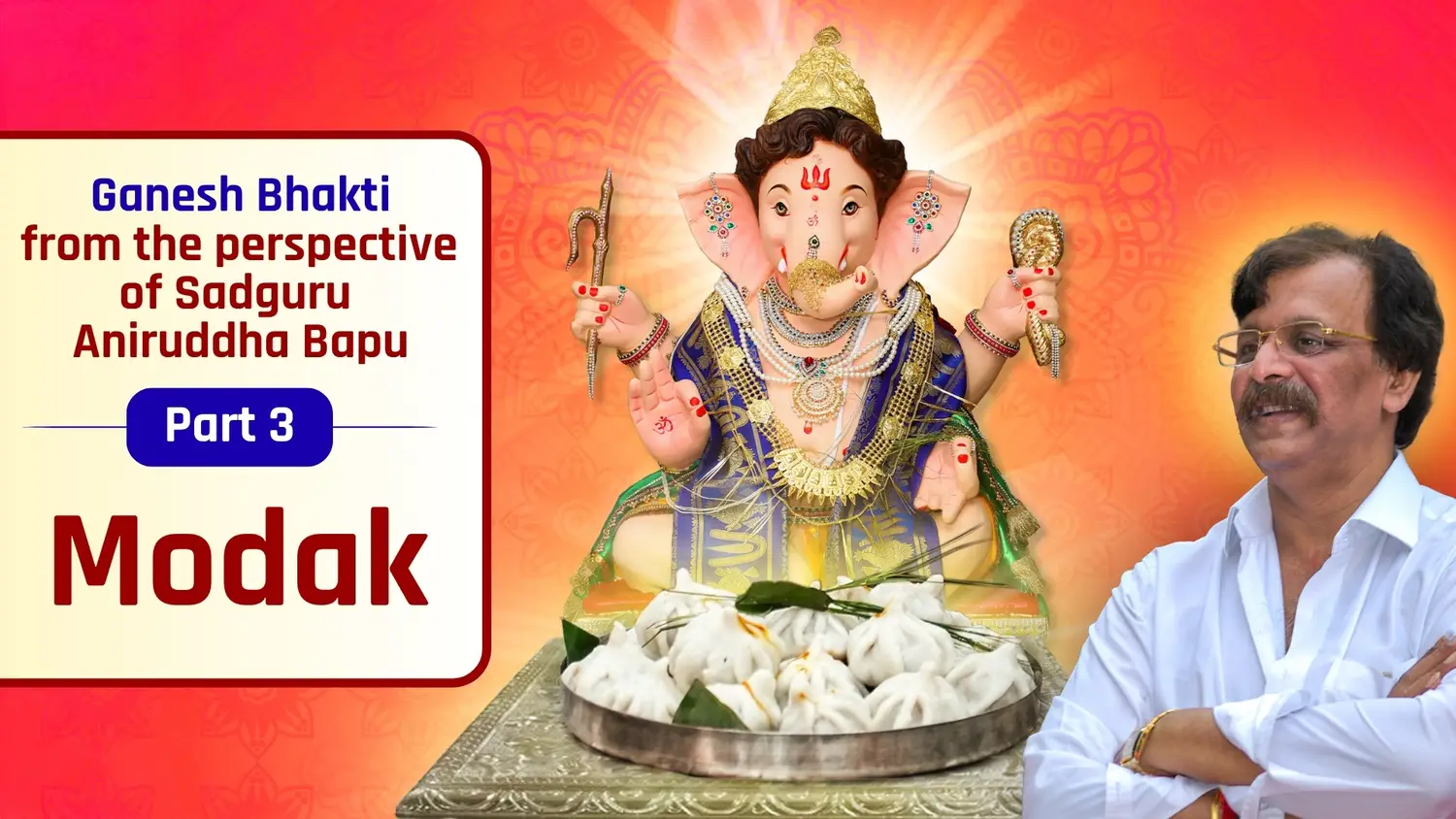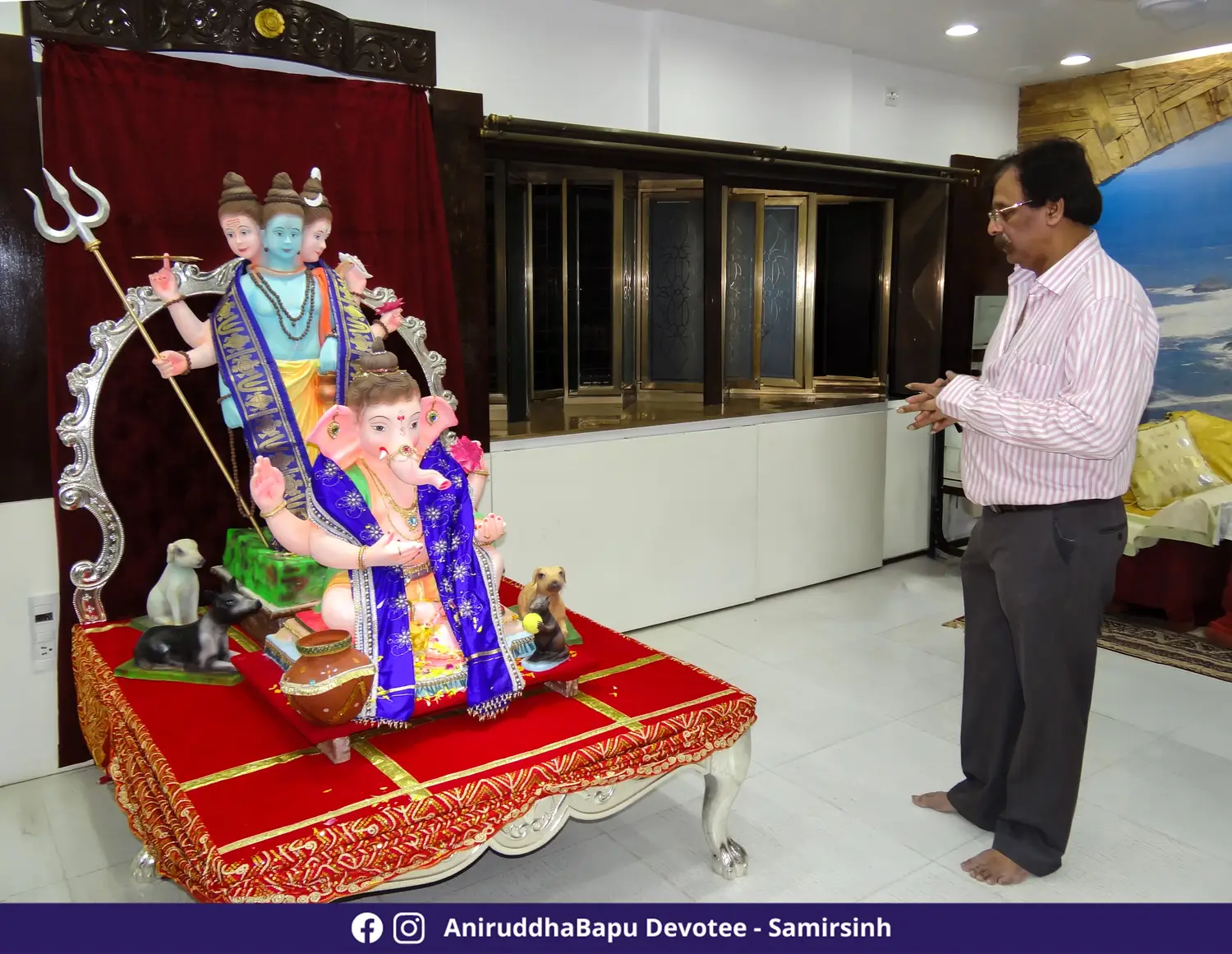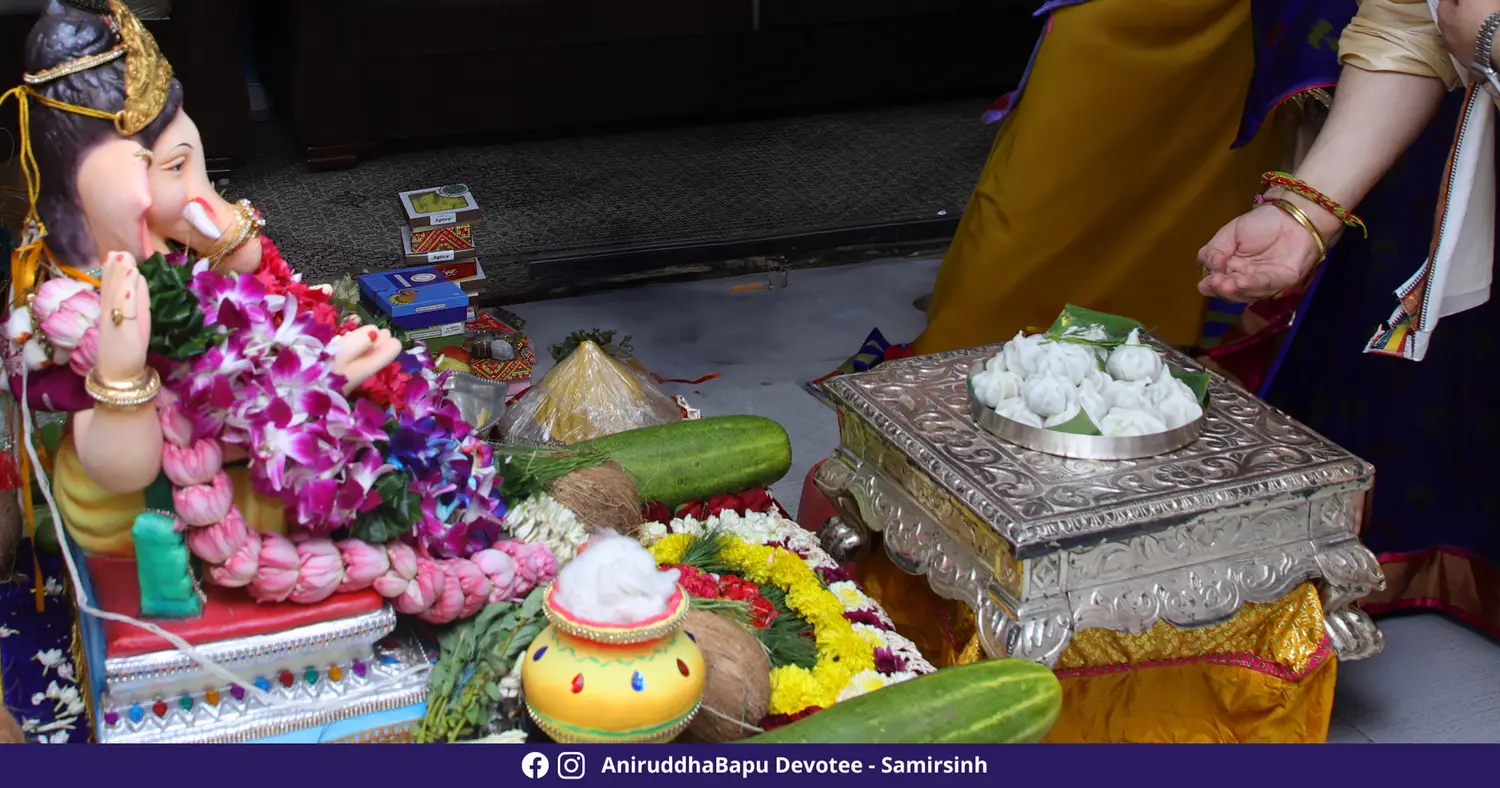Modak

हिंदी मराठी ગુજરાતી ಕನ್ನಡ বাংলা
Reference: Sadguru Shree Aniruddha Bapu’s editorial published in Dainik Pratyaksha dated 06-09-2006
The very moment one remembers Shri Ganapati, what immediately comes to the minds of both devotees and even atheists is Modak. These days, Modaks made of khoya (mawa) are commonly available. But these Mawa Modaks are like trying to quench your thirst for milk with buttermilk. From early childhood to this very day, the Modaks I have relished most dearly are the traditional Modaks, the ones where rice flour is kneaded in ghee, and the filling is made from fresh and tasty grated coconut prepared in homemade pure ghee. And then, while eating the Modak, you break it open and pour another spoonful of pure ghee into it. Every little child loves this soft, luscious and melting-in-mouth modak. This traditional Modak represents the pinnacle of attributes -Saumya, Snigdha and Guru. That’s why it is the ideal Naivedya (offering of food) for Shree Mahaganapati, one who governs the Mulādhār Chakra, who balances very hot (Atyushna), Ardhasnigdha light, and partially oily qualities. Given today’s circumstances, it may not be possible for everyone to make such Modaks. But those who can, must certainly prepare them and offer them to Shree Mahaganapati with utmost love. The Durvā (green grass) and Shami leaves that we offer to the Ganapati, along with the offering of traditional Modaks, help neutralize the Ugra (harsh), Ruksha (dry), and Laghu attributes, and in turn instills (Saumya) softness, (Snigdha) richness, and Guru (sthairya). As a result, the auspicious Varadvinayak, the remover of obstacles, manifests in both the Pranamay (vital energy) and Manomay (mental) sheaths of everyone.

Whenever I think of Modak, a very old story comes to my mind. There was once a king. He was extremely indulgent by nature and had never ever received any formal education. Therefore, when handing over the throne to him, his father arranged for him to marry a wise, well-read, and virtuous princess. Once, the king and learned and devoted queen, along with the entire royal family, went to a lake to frolic in the waters. While in the water, the king started playfully splashing water on the queen. Now the queen, whose spoken and studied language till her marriage was Sanskrit, said quickly: “Modakaih Sinchay” (मोदकैः सिञ्च). Upon hearing this, the king immediately called a servant and whispered something in his ear. Soon, the servant brought five or six containers full of Modaks, and the king began to pelt Modaks one after another at the queen! The queen, initially shocked and confused, quickly gathered her senses. Seeing the mocking smiles on the faces of other royal women and ministers, she felt deeply ashamed and distressed because the queen meant to say: “मा उदकैः सिञ्च” (Ma udakaih sincha) which literally meant “Do not splash water on me.” However, since that uneducated king only knew spoken Sanskrit and was unaware of the rules of Sanskrit grammar, he misinterpreted the meaning of the compound word (Sandhi) ‘Modakaiḥ’ by not breaking it down (मोदकैः = मा + उदकैः). While the story takes a very different turn ahead, I still find that same foolish king, the one who showered Modaks on the queen, appearing in various forms and places even today. It is indeed prescribed to respectfully offer Modaks and Durva to Lord Ganapati, as He is fond of them. Likewise, creating idols in various forms is also completely appropriate, for the Paramatma manifests in countless forms. However, lining up in queues in different places to feed milk to Ganapati — that is nothing but a repetition of that same foolish king.

I fail to understand that if Ganapati truly loves Modak so much, then why is He seen drinking only milk everywhere? Why doesn’t He eat Modaks? And more importantly, why does this question never even occur to any of us? I have absolutely no doubt that this Mangalmurti, this Paramatma, lovingly accepts even a stale piece of simple Bhakri offered with deep devotion by His devotees. So even if not a single grain from the offering plate before the idol appears to be touched, it doesn’t matter at all. In the Bhagavad Gita itself, Bhagwan Shreekrishna has very clearly and directly assured all devotees of this through His own words. Most importantly, the Paramatma has no need whatsoever to perform such acts to prove His eminence and glory; nor does He require any such measures to increase devotion in the minds of the people. The true Paramatma, who is fully aware of the complete existence of every devotee and non-devotee alike, and in whose hands alone lies the fruit of each one’s actions — never has any need for such bizarre displays.
Concluding the editorial, Sadguru Shree Aniruddha Bapu writes —
My friends, what the Paramatma truly wants is your unwavering faith, your devotion, and the seva offered to God and to His helpless children with a heart full of gratitude. This is the true offering (Naivedya), in fact, the highest offering (Naivedya) which the Paramatma wholly accepts and returns to the devotee, multiplied a thousandfold, as prasad.
Offer Modaks as Naivedya by all means, and joyfully partake of them yourself as well. However, do not forget that 'Mod' (मोद) means joy. To act in a way that brings joy to the Paramatma and to others is the highest form of Modak of all.
